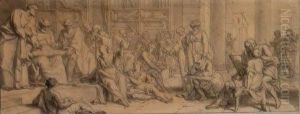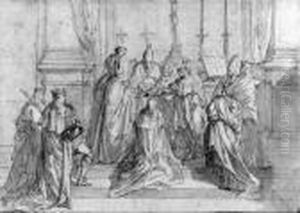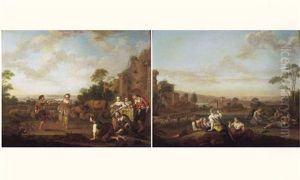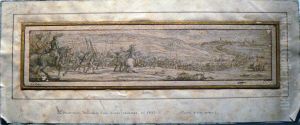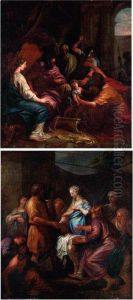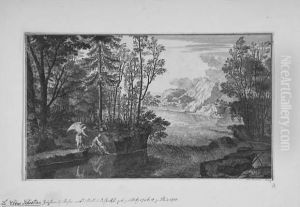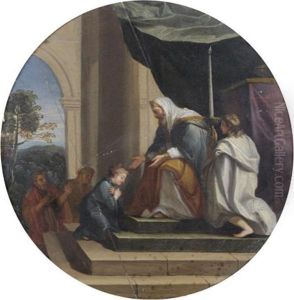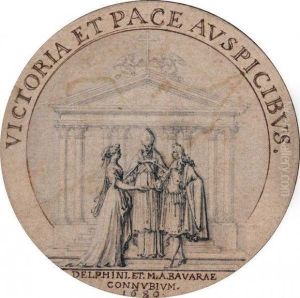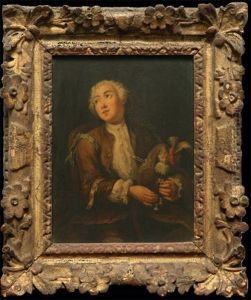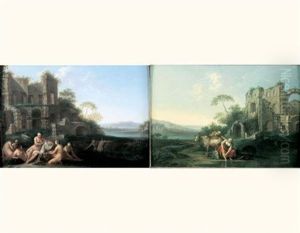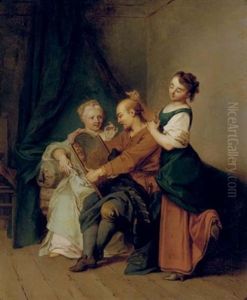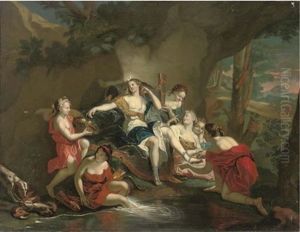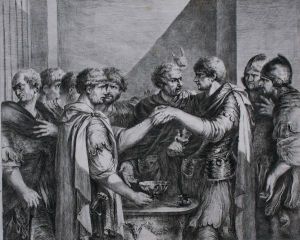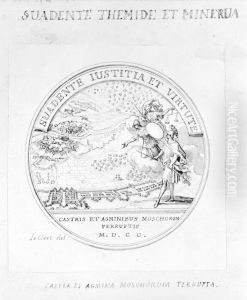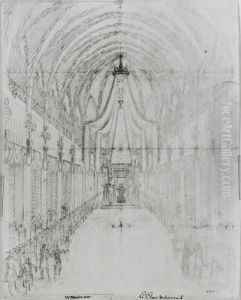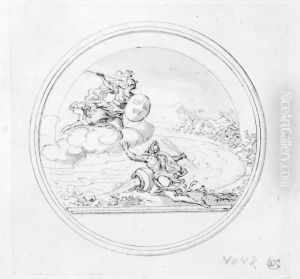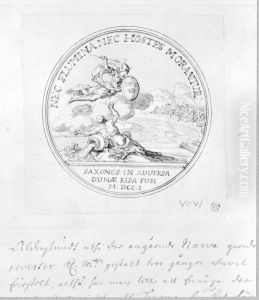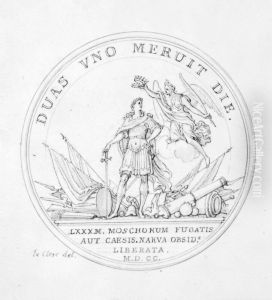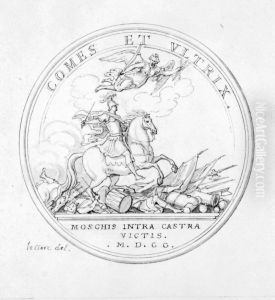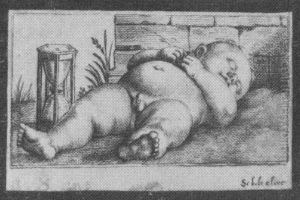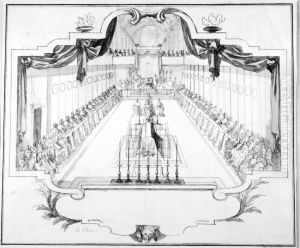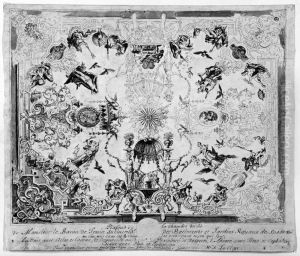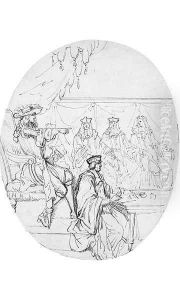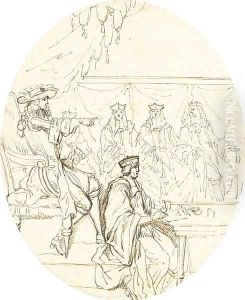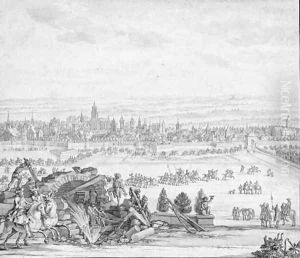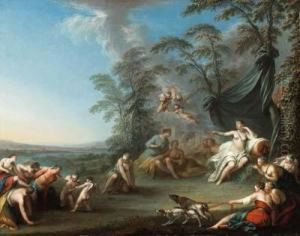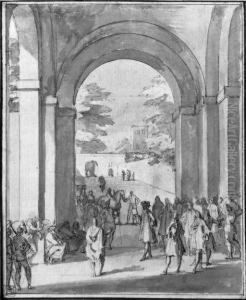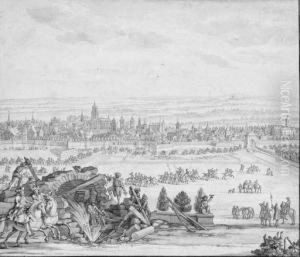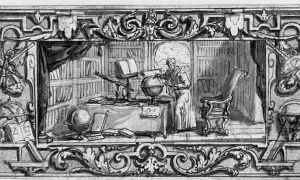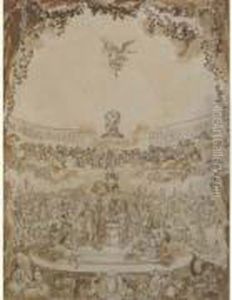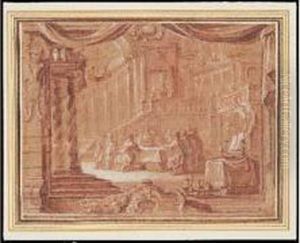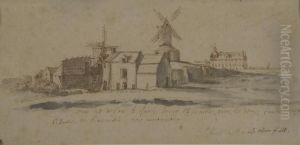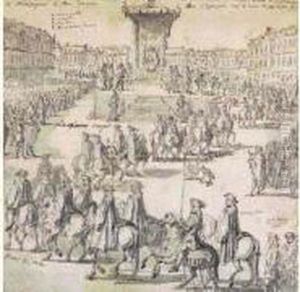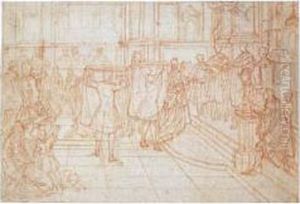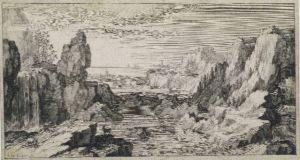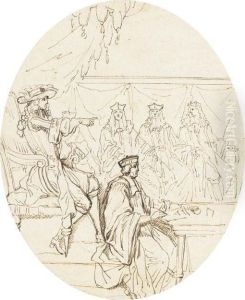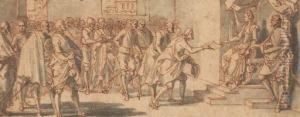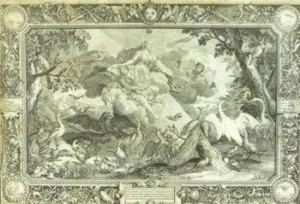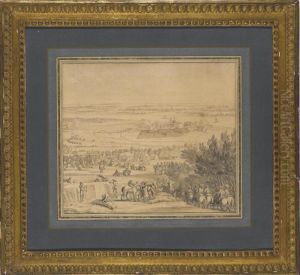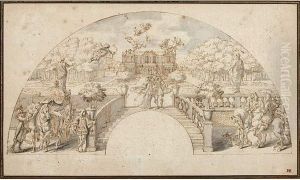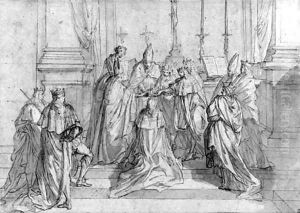Sebastien Leclerc Paintings
Sébastien Leclerc, also known as Sébastien Leclerc the Elder to distinguish him from his son with the same name, was a French artist and engraver born on September 26, 1637, in Metz, France. His early training was under the tutelage of a local painter, but he soon moved to Paris to further his education. There, he studied under the painter and engraver François de Poilly.
Leclerc became renowned for his skill in engraving, and his works often combined technical precision with rich artistic expression. He was a prolific artist, producing a large number of engravings that included religious and historical subjects, as well as more technical illustrations such as those for military treatises and architectural works. His engravings were not only appreciated for their aesthetic value but also for their educational content, as they were used to illustrate books and scientific publications of his time.
In 1672, Leclerc was received into the Académie Royale de Peinture et de Sculpture, an indication of his significant reputation in the art community. He was appointed as a designer and engraver to the King's Cabinet, which allowed him to work closely with the royal family and other prominent figures.
Leclerc's contributions to the arts extended beyond his engravings. He was also involved in the production of tapestries and played a role in the design of stage sets, bringing his illustrative talents to various aspects of visual culture. His work was characterized by a combination of realism and a keen eye for detail, which made his depictions particularly valued.
He died on October 25, 1714, in Paris, leaving behind a rich legacy that influenced future generations of engravers. His son, Sébastien Leclerc the Younger, also became a respected artist in his own right, continuing the family tradition in the arts.
